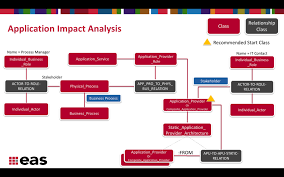The Importance of Impact Analysis in Decision-Making
Impact analysis is a crucial process that evaluates the effects and consequences of a decision or action before it is implemented. It plays a vital role in various fields, including business, economics, environmental planning, and public policy.
By conducting an impact analysis, stakeholders can assess the potential outcomes of a proposed project, policy change, or investment. This proactive approach helps decision-makers anticipate both positive and negative repercussions and make informed choices based on thorough evaluation.
One key benefit of impact analysis is its ability to identify risks and uncertainties associated with a decision. By analysing potential impacts on different stakeholders, resources, and the environment, organisations can develop mitigation strategies to minimise adverse effects and maximise benefits.
Moreover, impact analysis promotes transparency and accountability in decision-making processes. It enables stakeholders to understand the rationale behind a particular choice and ensures that decisions are made based on evidence rather than assumptions.
In the context of sustainable development and environmental conservation, impact analysis is essential for assessing the ecological footprint of human activities. It helps measure the long-term consequences of development projects on biodiversity, natural resources, and climate change.
Overall, impact analysis serves as a valuable tool for promoting responsible decision-making and fostering sustainable practices across various sectors. By considering the broader implications of our actions, we can create positive outcomes that benefit society as a whole.
Five Essential Tips for Conducting Effective Impact Analysis
- Identify stakeholders who will be affected by the proposed changes.
- Assess the potential positive and negative effects of the changes on different aspects of the business.
- Consider both short-term and long-term impacts to anticipate consequences over time.
- Use tools such as surveys, interviews, and data analysis to gather relevant information for a comprehensive impact analysis.
- Document findings and communicate them clearly to decision-makers to support informed choices regarding the proposed changes.
Identify stakeholders who will be affected by the proposed changes.
When conducting impact analysis, it is essential to identify stakeholders who will be affected by the proposed changes. Stakeholders can include individuals, groups, or organisations that have a vested interest in the outcomes of a decision or project. By recognising and involving these key parties early on, decision-makers can gain valuable insights into the potential impacts of their actions and tailor strategies to address concerns and maximise benefits for all involved. Engaging with stakeholders ensures that their perspectives are considered, leading to more informed and inclusive decision-making processes that ultimately contribute to the overall success and sustainability of the initiative.
Assess the potential positive and negative effects of the changes on different aspects of the business.
When conducting impact analysis, it is essential to assess the potential positive and negative effects of proposed changes on various aspects of the business. By thoroughly evaluating how the changes may impact different areas such as operations, finances, customer relations, and employee morale, organisations can make well-informed decisions that consider both risks and opportunities. This comprehensive approach helps in identifying areas that may benefit from the proposed changes as well as potential challenges that need to be addressed proactively. By understanding the full spectrum of impacts on the business, stakeholders can develop strategies to maximise benefits and mitigate risks effectively.
Consider both short-term and long-term impacts to anticipate consequences over time.
When conducting impact analysis, it is essential to consider both short-term and long-term impacts to anticipate consequences over time. By evaluating the immediate effects as well as the potential outcomes that may arise in the future, decision-makers can gain a comprehensive understanding of the implications of their actions. This holistic approach enables organisations to proactively address challenges, seize opportunities, and make informed decisions that align with their long-term goals and sustainability objectives.
Use tools such as surveys, interviews, and data analysis to gather relevant information for a comprehensive impact analysis.
To conduct a thorough impact analysis, it is essential to utilise a variety of tools such as surveys, interviews, and data analysis to gather relevant information. Surveys allow for collecting quantitative data from a large sample of stakeholders, providing valuable insights into their perspectives and preferences. Interviews offer a more in-depth understanding of individual experiences and viewpoints, adding qualitative richness to the analysis. Data analysis helps to identify patterns, trends, and correlations within the information collected, enabling decision-makers to make evidence-based conclusions. By combining these tools effectively, organisations can ensure a comprehensive impact analysis that considers diverse perspectives and factors to inform strategic decision-making processes.
Document findings and communicate them clearly to decision-makers to support informed choices regarding the proposed changes.
Documenting findings and communicating them clearly to decision-makers is essential in supporting informed choices regarding proposed changes. By presenting the results of impact analysis in a structured and comprehensible manner, decision-makers can grasp the implications of their decisions more effectively. Clear communication ensures that stakeholders understand the potential risks and benefits associated with a proposed change, enabling them to make well-informed decisions that align with their goals and values. Transparent reporting of findings also promotes accountability and encourages collaborative decision-making processes that consider the interests of all involved parties.

